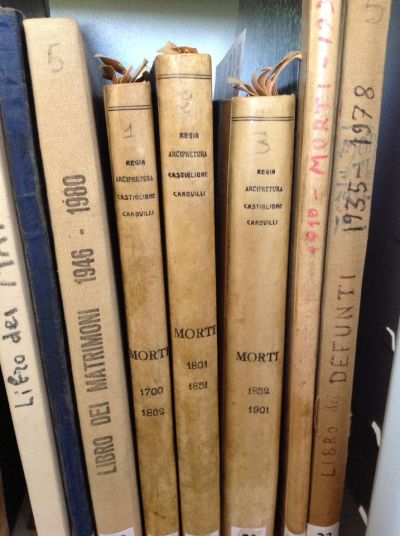Aside from Italian civil records, Italian parish records are the most valuable genealogical records as they may predate available civil records by a few centuries thus enabling you to take your family lines back several more generations. We have the Council of Trent to thank for this.
Council of Trent
In 1545, leaders of the Catholic church formed a council and began meeting in the city of Trento, Italy to address the concerns raised by the Protestant Reformation. One of the outcomes of the Council of Trent in 1563 was the requirement that all parish priests had to maintain written records for the sacraments of baptism, marriage and death for their parishioners. Since over 95 percent of Italians at that time were Catholic, this means that records for your ancestors were likely created.
Challenges of Parish Records
So, do the records still exist? Over the ensuing 400 years, acts of nature such as earthquakes, flood or fire and other destructive events such as war or the poor care and storage of records may have caused records to be lost. Locating records can be another challenge, as the records may be kept at the local parish or the mother church. You may have to contact several churches before you find the records you are looking for. In my ancestral village of Castiglione di Carovilli, the original parish church is a ruin dating back to 1537. However, record books from the early 1700s have been preserved and are stored in the “new” church that was built in 1904. Some of the challenges with reading parish records is that those created before 1810 are completely handwritten, they may be in either Latin or an Italian dialect, and there may be environmental damage or faded ink. Don’t let these challenges scare you off because these records are likely the only written records that exist of your earliest Italian ancestors, so they are worth exploring.
Types of Records
Baptism records, Atti di Battesimo, will be the earliest record available for your ancestor. The practice of the Catholic church is to baptize infants as soon as possible. It would not be unusual to find that your ancestor was baptized on the day he or she was born or within the first few days of life. The amount of information in a baptismal record will vary. However, you will always find the name of the child, the date of the baptism and the names of the parents. The actual date of birth may or may not be shown. The older the record, the lesser amount of information.
Marriage records, Atti di Matromonio, will sometimes contain not only the information about the actual marriage but also details about the marriage banns that were required to be posted or announced in church for three consecutive Sundays before the marriage ceremony was performed. Occasionally, if the couple were in a hurry to marry, one or two of the banns would be dispensed with and this will be noted in the marriage record. The dispensation to eliminate the banns could only be granted by the bishop, not the parish priest.
Death or Burial records, Atti di Morte, will be the last record for an ancestor. The amount of information within will vary. A death record may be useful to help identify when a person married more than once as the most recent spouse and previous spouses may be listed. As with any research, it is beneficial to collect all the records available and use them to deduce the history of your ancestor.
State of the Souls, Stato delle Anime or Status Animarum, can be a very valuable record. It was a census taken by the priest of all his parishioners and organized by family. Information contained in these records vary but usually will include the names and ages of each person in each household. Some records also include dates of baptism or marriage. These records will usually be found in villages that were part of the Papal States as they were used for tax collection purposes. They were conducted at random intervals unlike the U.S. Census which is conducted every 10 years.
How to Find the Records
Most parish records have not been digitized and there is no central repository. You will need to write to the local parish of your ancestral town to request records. The Catholic Church in Italy has an online directory of parishes located at www.chiesacattolica.it. The site is in Italian and a bit hard to navigate but if your web browser offers a translate feature, it will help you. When on the site, click on “Diocesi e Parrocchie” (Diocese and Parishes). A map will appear and from there you can click on the Region and Province to locate the local parish for your ancestral village. Alternately, I have had good luck with www.parrocchie.it and www.wikipedia.com by searching with the name of the village and finding the name of the local parishes. Next month we will explore how to request a parish record from Italy.



